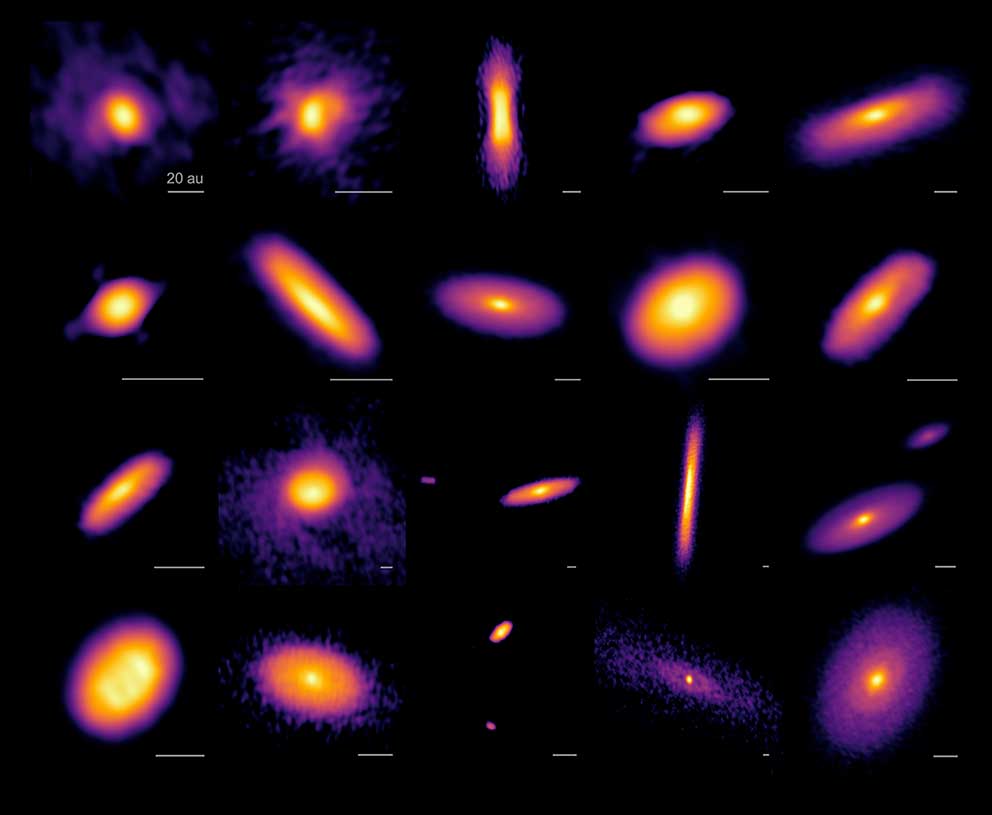
An international research team used the Atacama Large Millimeter/submillimeter Array (ALMA) to observe disks around 19 protostars with a very high resolution to search for the earliest signs of planet formation. This survey was motivated by the recent findings that planet formation may be well-underway in the more-evolved proto-planetary disks, but until now there had been no systematic study to search for signs of planet formation in younger protostellar systems.
Planets form in a disk around a newborn star. These 'proto-planetary' disks only last a few million years, meaning that a forming planetary system only has this amount of time to finish its formation. However, it is still not clear just how rapidly planet formation begins within these disks. Recent ALMA observations have revealed that many proto-planetary disks have substructures such as gaps and rings, indicating that planets are already forming from the disk. "These previous results motivated us to examine even younger disks around protostars to answer the question, at what stage of star formation do planet forms," says Nagayoshi Ohashi at Academia Sinica Institute of Astronomy and Astrophysics (ASIAA, Taiwan), who led the team.
The team observed disks around 19 protostars located within about 650 light-years from the Earth. This is the first systematic study to investigate the detailed structure of disks around a large sample of protostars with high angular resolution. The observations clearly show that the disks around protostars are different from more-evolved proto-planetary disks. Among the 19 protostars, rings, and gaps, which are signs of planet formation, were observed only in a few disks. Moreover, the ring structures are less distinct than those seen in the proto-planetary disks.
"We did not expect to see such clear differences between disks around protostars and more-evolved disks," says Ohashi. John Tobin, a Co-PI of the program at the National Radio Astronomical Observatory (USA) adds "Our results suggest that disks around protostars are not fully ready for planet formation. We believe that the actual formation of the planetary system progresses rapidly in the 100,000 years to 1,000,000 years after star formation begins."
This research was detailed in Nagayoshi Ohashi et al. "Early Planet Formation in Embedded Disks (eDisk). I. Overview of the Program and First Results" and 3 other papers (Lin et al., van 't Hoff et al., Yamato et al.) published on June 28, 2023 in the Astrophysical Journal, and one paper accepted for later publication in the same journal (Kido et al.).






